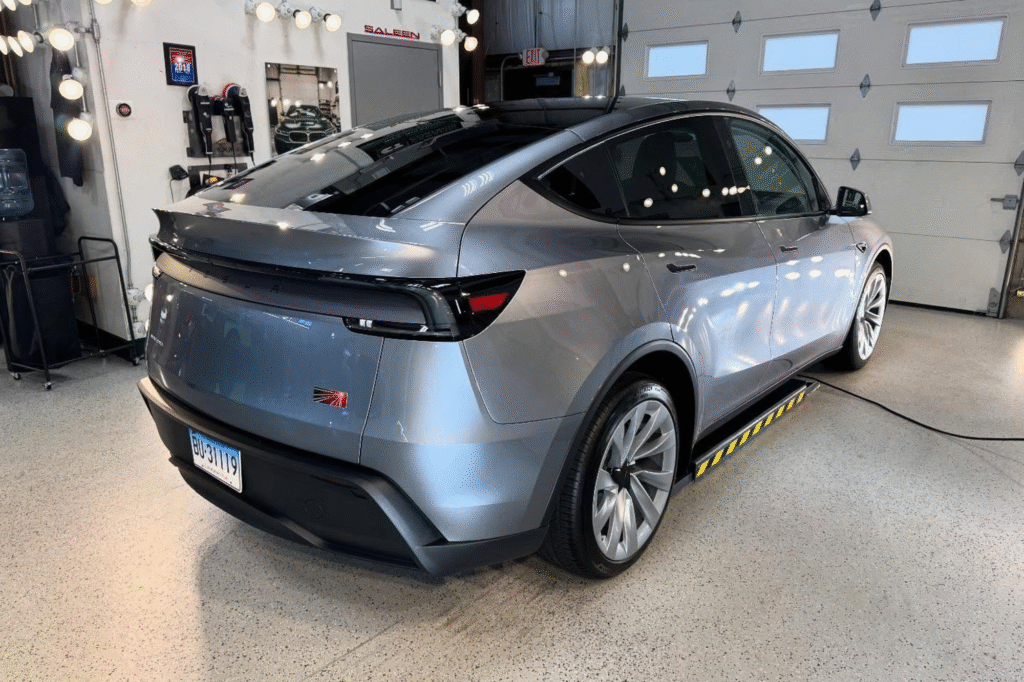Your car’s paint is protected by an advanced, precision-engineered product known as Paint Protection Film. This flexible, thermoplastic urethane layer, also known as clear bra, is your vehicle’s first line of defense against environmental threats, UV rays, and minor physical impacts. With self-healing properties that allow minor scratches to disappear when exposed to heat, PPF ensures that your vehicle maintains its aesthetic appeal and preserves its resale value.
Key Takeaways
- PPF is a thermoplastic urethane material that shields your car’s paint from damage.
- It absorbs impacts from road debris, features self-healing properties, and is virtually invisible.
- Protects from physical and chemical damage, UV rays, and helps maintain vehicle value.
- Requires professional installation for optimal fit and finish.
- Low-maintenance, superior to traditional wax, sealants, and ceramic coatings in physical protection.
Understanding Paint Protection Film (PPF)
When it comes to safeguarding your vehicle’s paint, Paint Protection Film services are a scientifically designed defender. Also known as a clear bra, PPF is a thermoplastic urethane film engineered for flexibility and impact resistance.
Your car’s paint is constantly exposed to environmental hazards like tree sap, bird droppings, road salts, and acid rain. The front end of your vehicle is especially susceptible to road debris and minor impacts that can result in scratches and chips. Over time, UV rays contribute to fading and oxidation, diminishing the vibrancy of your car’s paint.
Rather than opting for costly paint repairs with results that may not match the original finish, paint protection film Connecticut acts as a preventative investment, preserving your car’s appearance and minimizing the need for expensive touch-ups.
The Science Behind PPF
PPF is made from thermoplastic urethane, a material known for its impact resistance and flexibility. This composition allows it to absorb energy from minor impacts, such as stone chips and scratches, reducing the risk of permanent damage to your car’s paint.
What sets PPF apart is its self-healing technology. When exposed to heat (like sunlight or warm water), minor scratches and swirl marks disappear, making your car look as pristine as it did when the film was first applied. And because it’s transparent, PPF preserves your vehicle’s original color and shine, protecting without altering the car’s aesthetic.
Benefits of Using PPF
PPF offers numerous benefits that extend beyond just keeping your car looking great. It provides exceptional defense against physical damage, such as rock chips and minor scratches, and guards against chemical damage from substances like bird droppings and tree sap. Additionally, PPF shields your car from UV rays, preventing fading and oxidation, which can dull its exterior over time.
Another standout feature is its self-healing properties. Minor imperfections fade when exposed to heat, which helps maintain your car’s flawless appearance. Beyond the visual benefits, PPF also saves you money by reducing the need for repairs and repainting, all while preserving your vehicle’s value for future resale or trade.
Application Process of PPF
Applying PPF is a meticulous process that requires professional installation to ensure a seamless, flawless finish. An experienced installer will first clean and prepare your vehicle’s surface, ensuring no dirt or dust could affect the application.
Using a precise cutting system, the film is tailored to fit each body panel of your car, ensuring an exact match. The film is then applied using a special solution to smooth it out and avoid bubbles or wrinkles. This application process can take several hours, and once completed, the film needs to cure before it fully bonds to the paint surface.
Maintaining Your PPF
Maintaining PPF is simple and requires little effort. Regularly washing your vehicle with a soft cloth and pH-balanced soap will keep the film clean and clear. Avoid harsh chemicals and abrasive materials, as these can damage the film.
If you notice yellowing or peeling, it’s time to consider replacing the film. Although PPF has self-healing capabilities for minor scratches, significant damage may require replacement. It’s also important not to use a pressure washer around the edges of the film, especially during the first 30 days after installation, to ensure proper adhesion.
PPF vs. Other Paint Protection Methods
When comparing PPF to other paint protection methods, it’s clear that PPF offers superior protection. While ceramic coatings offer water resistance and enhance gloss, they do not protect against physical damage from road debris or rock chips. Wax and sealants may give your car a temporary shine, but they require regular reapplication and don’t offer the lasting protection PPF does.
PPF, on the other hand, provides both physical and chemical protection, preserving your vehicle’s appearance and value in the long term. With self-healing technology and unmatched durability, it’s the most effective paint protection solution available.
In Summary
PPF services is a premium solution designed to protect your vehicle’s paint from environmental hazards and physical damage. With its advanced science, self-healing properties, and long-term benefits, PPF is a smart investment for any car owner looking to preserve their vehicle’s aesthetic appeal and value. Invest in PPF today with CT Ceramic Coatings, and keep your car looking showroom fresh for years to come.

